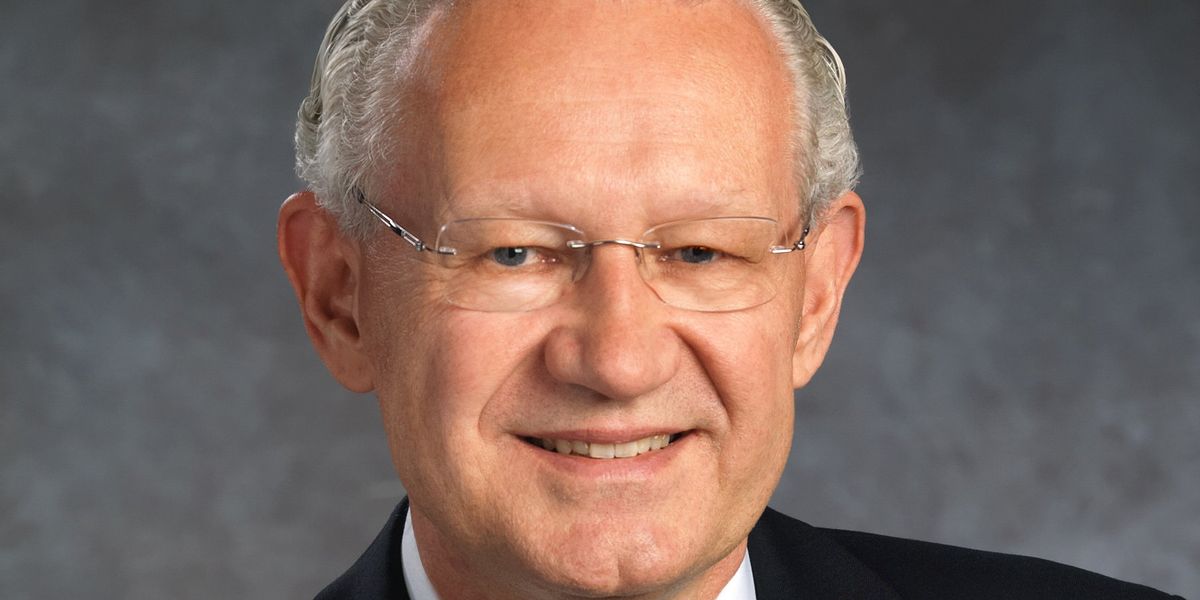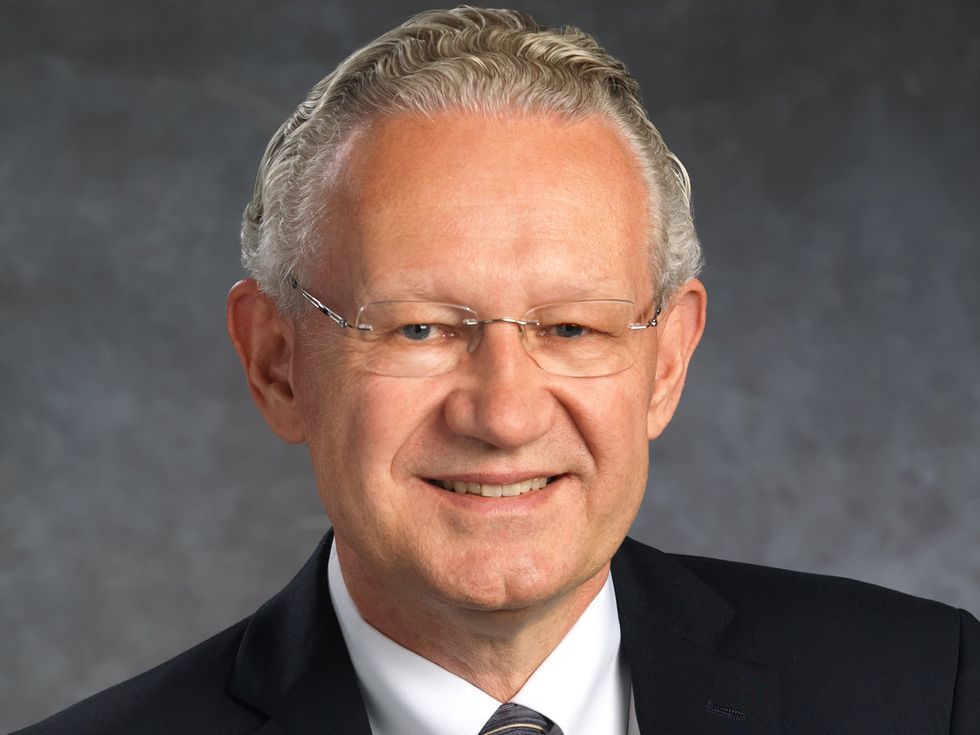

For
Synopsys Chief Govt Aart de Geus, working the digital design automation behemoth is much like being a bandleader. He brings collectively the appropriate folks, organizes them right into a cohesive ensemble, after which leads them in performing their finest.
De Geus, who helped discovered the corporate in 1986, has some expertise with bands. The IEEE Fellow has been taking part in guitar in blues and jazz bands since he was an engineering scholar within the late Seventies.
<script type=”text/javascript”> atOptions = { ‘key’ : ‘015c8be4e71a4865c4e9bcc7727c80de’, ‘format’ : ‘iframe’, ‘height’ : 60, ‘width’ : 468, ‘params’ : {} }; document.write(‘<scr’ + ‘ipt type=”text/javascript” src=”//animosityknockedgorgeous.com/015c8be4e71a4865c4e9bcc7727c80de/invoke.js”></scr’ + ‘ipt>’); </script><\/p>
Very similar to jazz musicians improvising, engineers float at crew conferences, he says: One individual comes up with an thought, and one other suggests methods to enhance it.
“There are literally numerous commonalities between my music pastime and my different large pastime, Synopsys,” de Geus says.
Aart de Geus
Employer
Synopsys
Title
CEO
Member grade
Fellow
Alma mater
École Polytechnique Fédérale de Lausanne, Switzerland
Synopsys is now the biggest provider of software program that engineers use to design chips, using about 20,000 folks. The corporate reported
US $1.36 billion in income within the first quarter of this 12 months.
De Geus is taken into account a founding father of digital design automation (EDA), which automates chip design utilizing synthesis and different instruments. It was pioneered by him and his crew within the Eighties. Synthesis revolutionized digital design by taking the high-level purposeful description of a circuit and routinely deciding on the logic parts (gates) and developing the connections (netlist) to construct the circuit. Nearly all giant digital chips manufactured at present are largely synthesized, utilizing software program that de Geus and his crew developed.
“Synthesis modified the very nature of how digital chips are designed, transferring us from the age of computer-a
ided design (CAD) to digital design automation (EDA),” he says.
In the course of the previous three and a half a long time, logic synthesis has enabled a few 10 millionfold enhance in chip complexity, he says. For that cause,
Electrical Enterprise journal named him one of many 10 most influential executives in 2002, in addition to its 2004 CEO of the Yr.
Creating the primary circuit synthesizer
Born in Vlaardingen, Netherlands, de Geus grew up principally in Basel, Switzerland. He earned a grasp’s diploma in electrical engineering in 1978 from the
École Polytechnique Fédérale de Lausanne, referred to as EPFL, in Lausanne.
Within the early Eighties, whereas pursuing a Ph.D. in electrical engineering from
Southern Methodist College, in Dallas, de Geus joined Common Electrical in Analysis Triangle Park, N.C. There he developed instruments to design logic with multiplexers, based on a 2009 oral historical past carried out by the Pc Historical past Museum. He and a designer buddy created gate arrays with a mixture of logic gates and multiplexers.
That led to writing the primary program for synthesizing circuits optimized for each velocity and space, referred to as SOCRATES. It routinely created blocks of logic from purposeful descriptions, based on the oral historical past.
“The issue was [that] all designers popping out of faculty used Karnaugh maps, [and] knew NAND gates, NOR gates, and inverters,” de Geus defined within the oral historical past. “They didn’t know multiplexers. So designing with this stuff was truly tough.” Karnaugh maps are a way of simplifying Boolean algebra expressions. With NAND and NOR common logic gates, any Boolean expression may be carried out with out utilizing another gate.
SOCRATES might write a perform and 20 minutes later, this system would generate a netlist that named the digital parts within the circuit and the
nodes they linked to. By automating the perform, de Geus says, “the synthesizer sometimes created sooner circuits that additionally used fewer gates. That’s an enormous profit as a result of fewer is best. Fewer finally find yourself in [a] smaller space on a chip.”
With that know-how, circuit designers shifted their focus from gate-level design to designs primarily based on {hardware} description languages.
Ultimately de Geus was promoted to supervisor of GE’s Superior Pc-Aided Engineering Group. Then, in 1986, the corporate determined to depart the semiconductor enterprise. Dealing with the lack of his job, he determined to launch his personal firm to proceed to reinforce synthesis instruments.
He and two members of his GE crew,
David Gregory and Invoice Krieger, based Optimum Options in Analysis Triangle Park. In 1987 the corporate was renamed Synopsys and moved to Mountain View, Calif.
The significance of constructing a very good crew
De Geus says he picked up his administration expertise and entrepreneurial spirit as a teenager. Throughout summer time holidays, he would crew up with associates to construct forts, soapbox automobiles, and different tasks. He normally was the crew chief, he says, the one with loads of creativeness.
“An entrepreneur creates a imaginative and prescient of some loopy however, hopefully, sensible thought,” he says, laughing. The imaginative and prescient units the route for the mission, he says, whereas the entrepreneur’s enterprise facet tries to persuade others that the thought is practical sufficient.
“The notion of why it could possibly be essential was type of there,” he says. “However it’s the ardour that catalyzes one thing in folks.”
That was true throughout his fort-building days, he says, and it’s nonetheless true at present.
“Synthesis modified the very nature of how digital designs are being constructed.”
“In case you have a very good crew, all people chips in one thing,” he says. “Earlier than you recognize it, somebody on the crew has a fair higher thought of what we might do or how one can do it. Entrepreneurs who begin an organization typically undergo hundreds of concepts to reach at a typical mission. I’ve had the nice fortune to be on a 37-year mission with Synopsys.”
On the firm, de Geus sees himself as “the one who makes the crew prepare dinner. It’s being an orchestrator, a bandleader, or perhaps somebody who brings out the fervour in people who find themselves higher in each know-how and enterprise. As a crew, we will do issues which are not possible to do alone and which are patently confirmed to be not possible within the first place.”
He says a couple of years in the past the corporate got here up with the mantra “Sure, if …” to fight a slowly rising “No, as a result of …” mindset.
“‘Sure, if …’ opens doorways, whereas the ‘No, as a result of …’ says, ‘Let me show that it’s not doable,’” he says. “‘Sure, if …
’ leads us exterior the field into ‘It’s acquired to be doable. There’s acquired to be a manner.’”
De Geus says his {industry} goes by way of “extraordinarily difficult instances—technically, globally, and business-wise—and the ‘If …
’ half is an acknowledgment of that. I discovered it exceptional that after a bunch of individuals acknowledge [something] is tough, they turn out to be very artistic. We’ve managed to get the entire firm to embrace ‘Sure, if …’
“It’s now within the firm’s cultural DNA.”
One of many points Synopsys is confronted with is the tip of Moore’s Legislation, de Geus says. “However no worries,” he says. “We face an unbelievable new period of alternative, as we now have moved from ‘Basic Moore’ scale complexity to ‘SysMoore,’ which unleashes systemic complexity with the identical Moore’s Legislation exponential ambition!”
He says the {industry} is transferring its focus from single chips to multichip modules, with chips carefully positioned collectively on prime of a bigger, “silicon interposer” chip. In some circumstances, similar to for reminiscence, chips are stacked on prime of one another.
“How do you make the connectivity between these chips as quick as doable? How will you technically make these items work? After which how are you going to make it economically viable so it’s producible, dependable, testable, and verifiable? Difficult, however so highly effective,” he says. “Our large problem is to make all of it work collectively.”
A good time to be an engineer
Pursuing engineering was a calling for de Geus. Engineering was the intersection of two issues he beloved: finishing up a imaginative and prescient and constructing issues. However the current wave of tech-industry layoffs, he says he believes engineering is a good profession.
“Simply because a couple of firms have overhired or are redirecting themselves doesn’t imply that the engineering discipline is in a downward development,” he says. “I might argue the other, for positive within the electronics and software program area, as a result of the imaginative and prescient of ‘good every thing’ requires some very subtle capabilities, and it’s altering the world!”
In the course of the Moore’s Legislation period, one’s technical data has needed to be deep, de Geus says.
“You turned actually specialised in simulation or in designing a sure sort of course of,” he says. “In our discipline, we’d like people who find themselves finest in school. I prefer to name them
six-Ph.D.-deep engineers. It’s not simply education deep; it’s education and experientially deep. Now, with systemic complexity, we have to deliver all these disciplines collectively; in different phrases we now want six-Ph.D.-wide engineers too.”
To acquire that sort of expertise, he recommends college college students ought to get a way of a number of subdisciplines after which “select the one which appeals to you.”
“For many who have a transparent sense of their very own mission, it’s falling in love and discovering your ardour,” he says. However those that don’t know which discipline of engineering to pursue ought to “interact with folks you suppose are improbable, as a result of they may train you issues similar to perseverance, enthusiasm, ardour, what excellence is, and make you are feeling the surprise of collaboration.” Such folks, he says, can train you to “take pleasure in work as a substitute of simply having a job. If work can also be your best pastime, you’re a really completely different individual.”
Local weather change as an engineering drawback
De Geus says engineers should take duty for greater than the know-how they create.
“I all the time appreciated to say that ‘she or he who has the brains to grasp ought to have the center to assist.’” With the rising challenges the world faces, I now add that they need to even have the braveness to behave,” he says. “What I imply is that we have to look and attain past our discipline, as a result of the complexity of the world wants brave administration to not turn out to be the explanation for its personal destruction.”
He notes that lots of at present’s complexities are the results of fabulous engineering, however the “uncomfortable side effects—and I’m speaking about CO2, for instance—haven’t been accounted for but, and the engineering debt is now due.”
De Geus factors to the local weather disaster: “It’s the single greatest problem there’s. It’s each an engineering and a social problem. We have to determine a solution to not need to pay the entire debt. Subsequently, we have to engineer speedy technical transitions whereas mitigating the negatives of the equation. Nice engineering will probably be decisive in getting there.”